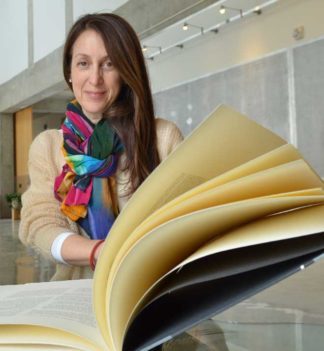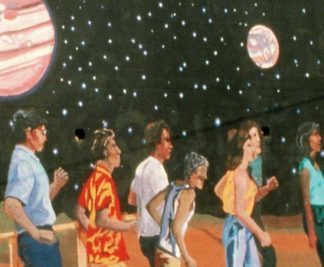By Allison Campbell-Jensen
Her plan for teaching students in the Chicano and Chicana Art course how to approach their research projects was ready. Yet switching the instruction from in-person to online presented a few surprises for Arts & Architecture Librarian Deborah Ultan.
“It was actually kind of fun,” she says. The online learning went better than she had expected.
Although Ultan says she missed getting a “feel for the room,” she enjoyed seeing the 20-some students close-up via the Zoom-facilitated class meeting — it was a different experience than standing in front of them in a classroom. She could see their facial expressions, for instance, as they reacted to her presentation.
In addition, rather than taking a while to warm up and ask questions, as often happens in a more typical classroom setting, they seemed primed to use the chat function to carry out conversations. Perhaps, Ultan says, “they are very comfortable in that media environment.”
Updated course guide gave students lots of choices
She and the faculty member running the course, Karen Mary Davalos, Professor and Chair of Chicano & Latino Studies, changed the original concept for the students’ research somewhat. A few updates to the course-library guide that Ultan had created made it even more relevant, by pointing the students to newly available e-resources such as the National Emergency Library. Its many links, among others, include image resources, the Cheech Marin Collection, ARTstor, the advant-garde UbuWeb, and U of M Libraries catalog.
“They really have a lot of choices,” Ultan says. She based her approach on assuming that the students knew little about art research using library catalogs, image databases, and e- and print journals. In researching artists, perhaps particularly artists outside the mainstream, she says, “it’s really important to know where they show up in print even if you can’t access the material right now.”
Following an artist’s tracks, as it were, Ultan says, “shows the journey or the trajectory of an artist.” She emphasized to the students that, as they re-enact that artist’s journey, they need to recognize where their coverage appears, in small press, alternative, or mainstream media.
It was, she notes, “a lot to teach in one hour with students you haven’t met.” Nonetheless, the feedback from Davalos to Ultan was that the students were glad she started with the basics of research, introduced a broad range of materials, and methods for refining the research.
It was a thrill for Ultan, she says, because their feedback showed they were alert and engaged with what she was teaching. “I was able to make the connection I needed to make.”






